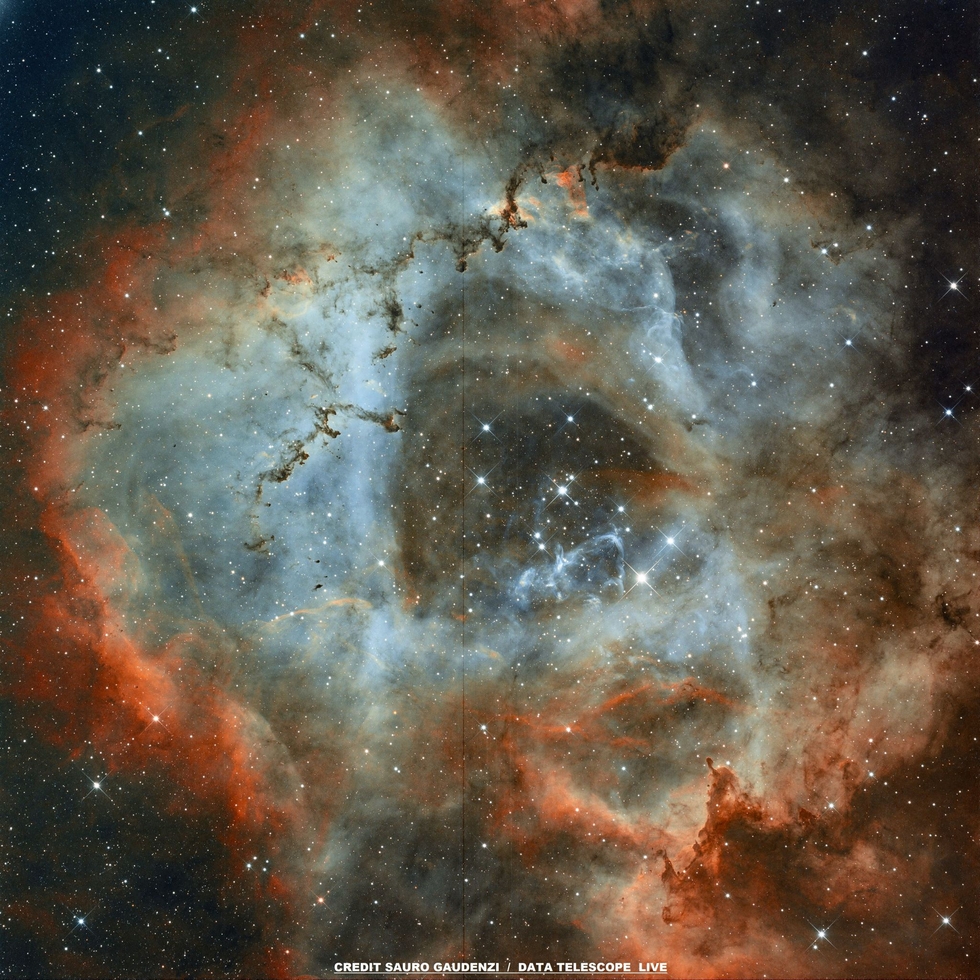Rosette Nebula
Rosette Nebula
The Rosette Nebula (also known by the catalog acronyms NGC 2237 and C 49) is a large H II region of roughly circular shape located at the edge of a giant molecular nebula, in the constellation of the Unicorn.
The nebula has an angular diameter of 1.3° and is located at a distance of 1600 parsecs (about 5200 light years) from the solar system; it has an approximate size of 100 light years.
At the center of the Rosette Nebula lies a bright open cluster, known as NGC 2244; the blue stars of the cluster, part of the OB association known as Monoceros OB2, emit ultraviolet radiation, which excites the gas in the nebula causing it to emit red light. The stellar wind from the O and B group of stars is thought to put pressure on the interstellar cloud, causing compression, followed by star formation; in fact, many Bok globules have been observed in the region, believed to be the site of star formation.
The nebula has an angular diameter of 1.3° and is located at a distance of 1600 parsecs (about 5200 light years) from the solar system; it has an approximate size of 100 light years.
At the center of the Rosette Nebula lies a bright open cluster, known as NGC 2244; the blue stars of the cluster, part of the OB association known as Monoceros OB2, emit ultraviolet radiation, which excites the gas in the nebula causing it to emit red light. The stellar wind from the O and B group of stars is thought to put pressure on the interstellar cloud, causing compression, followed by star formation; in fact, many Bok globules have been observed in the region, believed to be the site of star formation.
SPECIFICATIONS
Telescope
CHI-4-CCD
Camera
FLI PL16803
Location
EL SAUCE OBSERVATORY, CHILE
Date of observation
24-12-2020
Filters
SHO
Processing
Pixinsight and Photoshop
Credits
Processing Sauro Gaudenzi / Data Telescope Live


